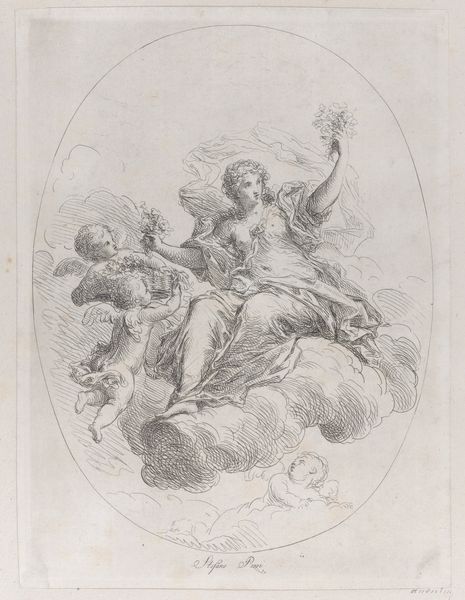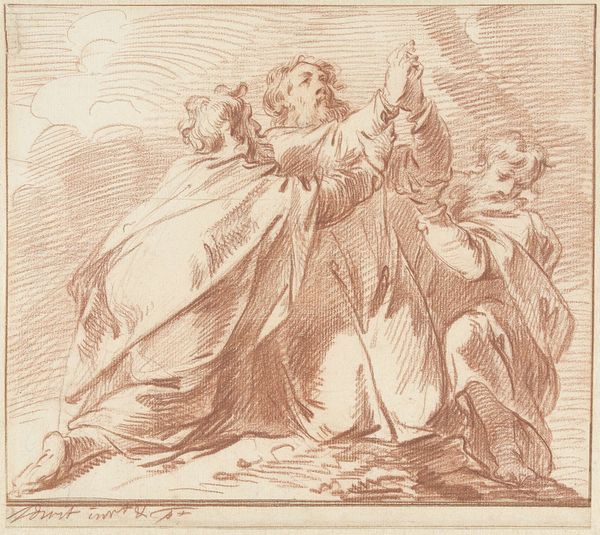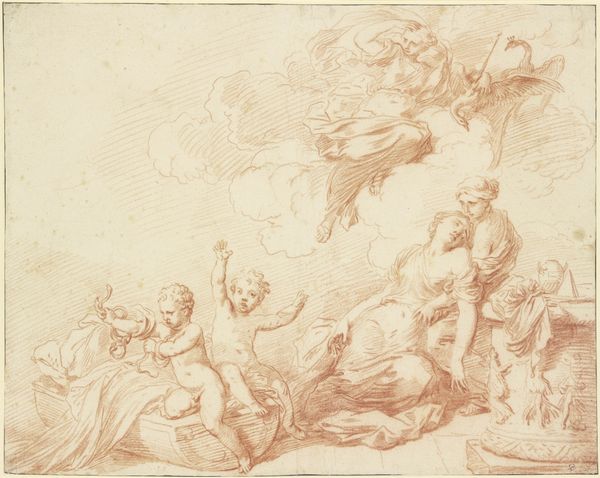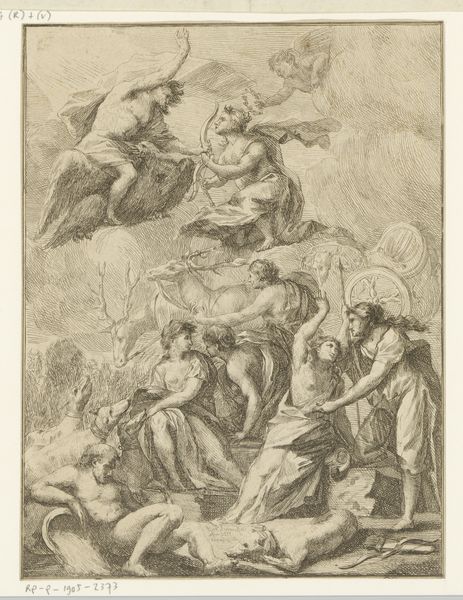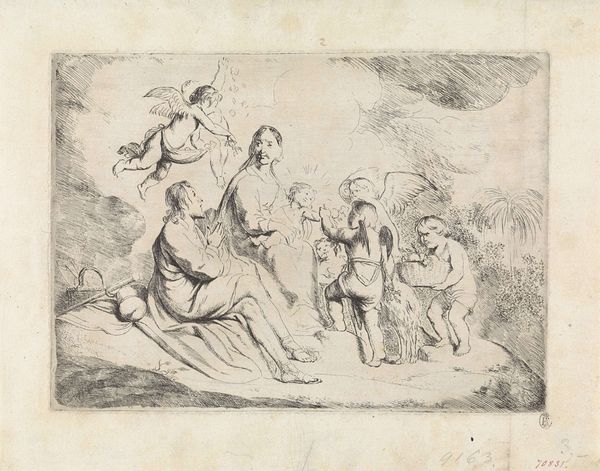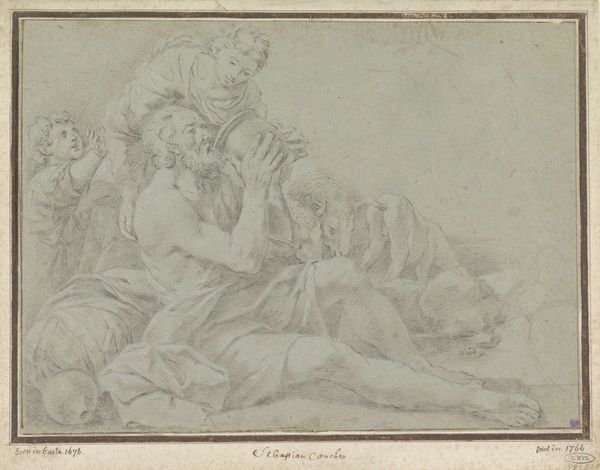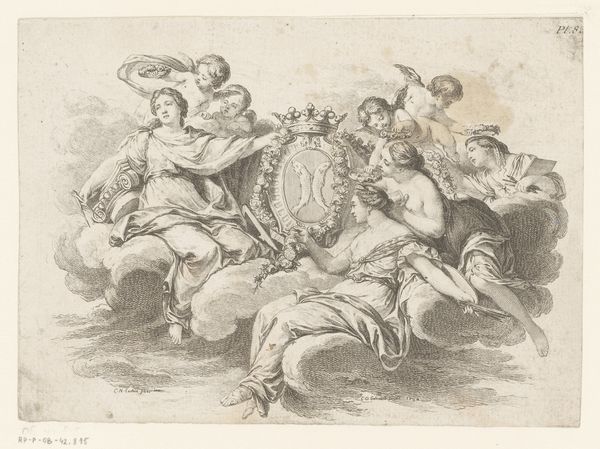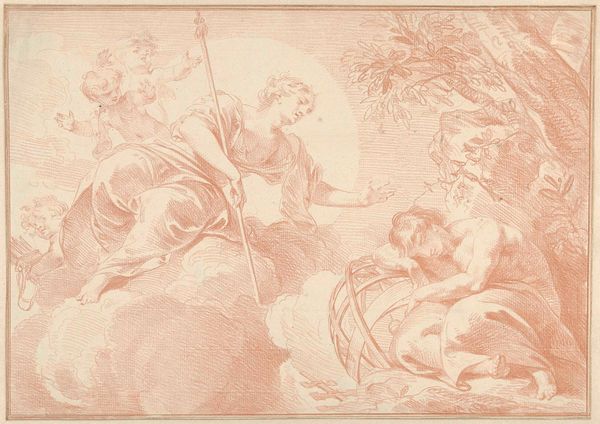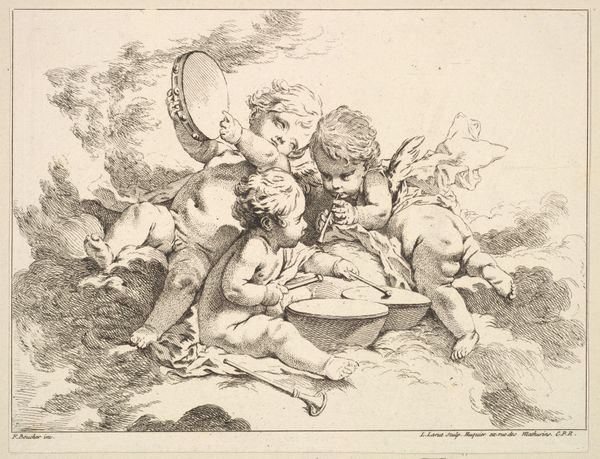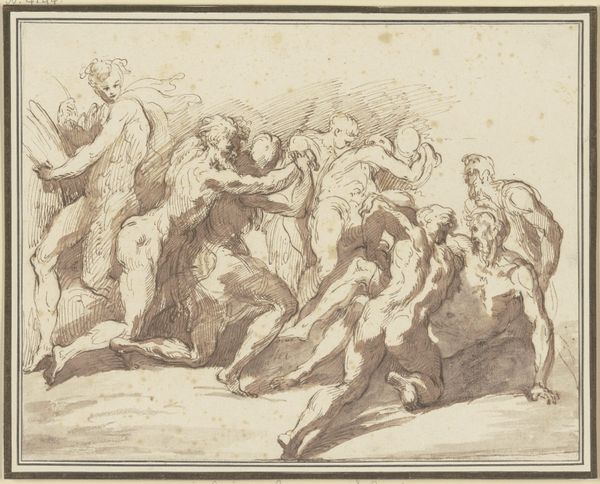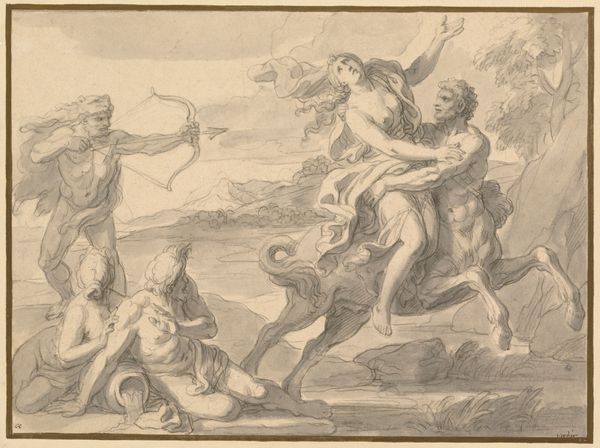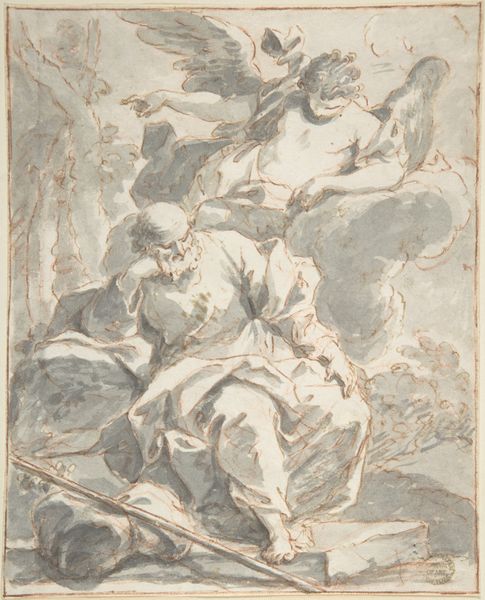
drawing, pen
#
drawing
#
allegory
#
baroque
#
figuration
#
pencil drawing
#
pen
#
history-painting
Dimensions: height 236 mm, width 295 mm
Copyright: Rijks Museum: Open Domain
Editor: This drawing, "The Fates" by Jacob de Wit, dates back to the early 18th century. Executed in pen and pencil, it's surprisingly delicate despite depicting such a powerful subject. I'm struck by the way the figures seem to float within the composition. What resonates with you most in this piece? Curator: What captures my attention is how de Wit renders the Moirai, or Fates. Notice the tools they carry - the spindle, the scissors, and the scroll. These are potent symbols, speaking directly to our understanding of destiny. Editor: Can you elaborate on that? What do these symbols signify? Curator: Well, the spindle traditionally represents Clotho, who spins the thread of life. Lachesis measures its length, dictating the duration of one’s existence. And finally, Atropos, with her shears, cuts the thread, signifying the end of life. Editor: So it's all very deterministic. Was there a cultural reason that this allegory would be popular at the time? Curator: Absolutely. In the Baroque era, the concept of fate was heavily intertwined with ideas of order and divine will. Consider how de Wit uses light and shadow. Are these figures benevolent or ominous? It's deliberately ambiguous. Editor: That’s true; the expressions are hard to read, and the fluid lines add to that sense of ambiguity. I appreciate how the drawing style doesn't give us any easy answers about whether to fear or accept our fate. Curator: Precisely! The symbols invite contemplation on life’s unpredictable journey. It makes one wonder how we, today, wrestle with such universal questions.
Comments
No comments
Be the first to comment and join the conversation on the ultimate creative platform.
